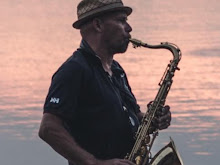I´d like to share you some inspiring story about seaworthy vessel and brave man.
Here we goes
Source: http://saltwaterpeoplehistoricalsociety.blogspot.fi/2012/02/great-solo-circumnavigator-robin-knox.html
-->
The Great Solo
Circumnavigator ✪ ✪ ✪ ✪ Robin Knox-Johnston and SUHAILI
In early afternoon on 14 June 1968,
Robin Knox-Johnston had a final beer in a local pub before stepping onto a
small heavily laden sailboat rising gently to the swell in Falmouth Harbor. As
usual when important events are in the wind, last minute preparations were
still being done and two friends of Knox-Johnston's busied themselves forward
bolting down a final deck fitting. With his departure imminent, the loneliness
and doubt of the passage ahead seemed to suddenly press in on the young
Englishman, threatening to undo all the resolve built up during the long months
of preparation. Finally he called out, "Okay, I'll finish that, I'm
off." And so he was. Off on one of the truly epic adventures in nautical
history; one man and his small vessel would sail 30,000 miles non-stop around
the world.
At age 29, Knox-Johnston had 11 years
of experience in the British Merchant Navy behind him with a passage from India
under sail to toughen him mentally and physically for what lay ahead. But to
many observers, his little 32-foot wooden ketch appeared to be a most
singularly unqualified candidate for such an undertaking.
 |
| Colin Archer? |
Basically slow, with antiquated gear, a
high cabin trunk, and a rickety self-steering system, the boat had not been the
one Knox-Johnston had had in mind when a chance remark first started him
thinking about attempting the passage. But as is often the case, money, or the
lack of it, is the final determinant for the vessel many a sailor sails. And
besides, there was more to SUHAILI than met the eye. Named after the Arabic
word for southeast wind, she had been built in Bombay using handhewn Indian
teak for stringers, frames, floors, and deck. Completed in 1965, even her
planking was 1 ¼-inch teak and, with the exception of the high cabin coaming
which would cause trouble southwest of Cape Town, she was a sturdy craft.
Shortly after Knox-Johnston made his
decision to go, an English newspaper announced a $12,000 prize for the first
man to do the circumnavigation non-stop. Suddenly SUHAILI had seven
competitors, and nearly all much faster. So it was a race against the clock,
the solitude and the elements, as the SUHAILI sailed into the Southern Ocean
and its wailing winds and crashing seas. The specter of failure and total
disaster was continually raised as fitting after fitting packed up. SUHAILI
nearly lost her high cabin when smashed flat in a knockdown. Later her hull
began leaking badly and had to be repaired under water. The steering vane
broke, battery acid splashed into the skipper's eye. The gooseneck sheered off,
water became contaminated, and the sextant took a severe jolt. Two tillers
broke, and the boat was temporarily grounded on a sand bar south of New
Zealand. A jibstay parted, and the engine seized up. The sails and even the
skipper's clothes disintegrated as the gallant little vessel weathered gale
after gale in the austral waters. It was a marvel of courage and endurance. At
last as the competitors dropped out one by one, it was SUHAILI alone that laid
claim to the prize. On 22 April 1969, after 313 days at sea, a heavily reefed
SUHAILI entered Falmouth Harbor in half a gale. The ship and crew had
accomplished what no boat and no man had ever done before. Together they had encircled
the world non-stop under sail.

"Where
from?" The English customs man asked the time-honoured question as the
skipper stepped aboard.
"Falmouth" Robin Knox-Johnston replied. The long
journey into history was over.
Knox-Johnston donated his prize money for being the fastest competitor in the
Sunday Times Golden Globe Race to the family of Donald Crowhurst, who committed
suicide after attempting to fake his round the world sailing voyage.
The sailor of long-standing, with a big heart, was knighted in 1995.
Winter
2008-2009
The National Maritime Historical Society (USA) recognized Sir Robin
Knox-Johnston for his accomplishments and contributions promoting the heritage
of seafaring by bestowing upon him the NMHS Distinguished Service Award.
Since the Golden Globe Race in 1969 he has competed in countless sailing races
both solo and crewed, written a number of very popular books, and worked
tirelessly to promote world-class marine events.
He was interviewed by Richard du Moulin for the NMHS's journal Sea History
winter issue 2008/09 when he asked Knox-Johnston several questions; two we've
chosen to include here:
Du Moulin--How did you first get involved in sailboat racing, and solo sailing
in particular?
Knox-Johnston: I learned to sail in the merchant navy. In the 1950s, lifeboats
still carried masts and sails--so we had to learn how to use them. But I was
lucky, I was sent to a Cadet ship where the crew were replaced by apprentices,
and we were given a sailing whaler and two dinghies for recreational purposes.
I had built my boat SUHAILI in Bombay (Mumbai) and sailed
her home via Arabia and the Cape of Good Hope. Whilst I was doing that, Frances
Chichester sailed around the world with one stop, and I felt that left just one
thing left in sailing--to go 'round alone non-stop.
Du Moulin--How did you finance the 1969 Golden Globe Race?
Knox-Johnston--I tried to get sponsorship but failed completely, so I financed
the voyage on a bank overdraft and by writing. The advances for a book helped.
Du Moulin--In hindsight, what is your most memorable observation or
recollection of that race?
Knox-Johnston--My most memorable recollection is dealing with those who told me
the voyage was not possible and I could not do it. I thought differently.























